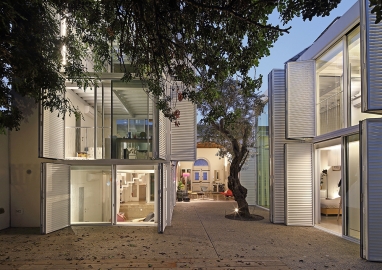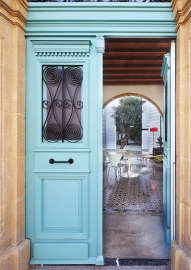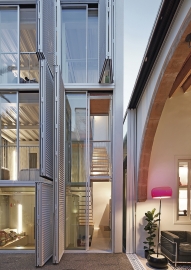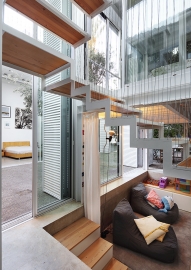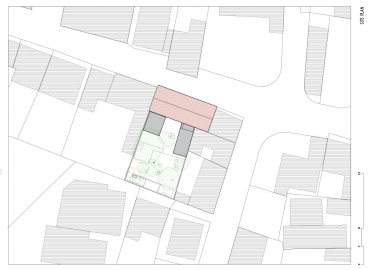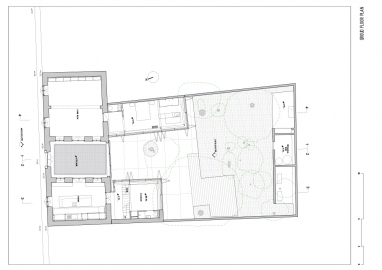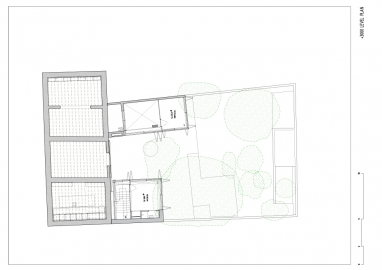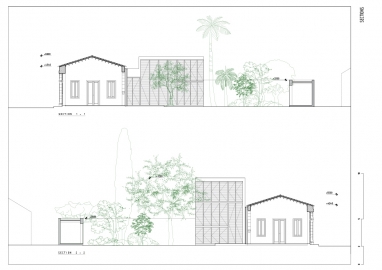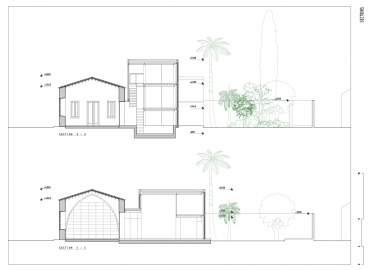House 0410
This renovation and contemporary extension of a listed house from 1904 investigates notions of privacy and interaction among its tenants, as well as perceptions of scale and intimacy within the private dwelling. It also explores the idea of aesthetics as a transient notion that is intertwined with a flexible program and mutable boundaries.
The listed house adheres to the predominant typology at the time of its construction where three spaces are organized sequentially with the central one being a covered outdoor yard that faces South, hence the name ‘Sun Hall’. This central space was also the main entry into the house.
Each of the spaces did not have a distinct function with the bigger space usually accommodating the daily functions of the family and the other the sleeping quarters.
The contemporary addition is comprised from two distinct parts as extensions of the two interior spaces of the old House on either side of the ‘Sun Hall’. These frame an external courtyard in-between as an extension of the existing central ‘Sun Hall’.
These new volumes lengthen and enrich the sequence of spatial experiences as you move through each room, and they all contribute as episodes to the narrative of transversing between old and new.
The spaces of the existing house are used as communal areas including food preparation. The two contemporary additions, whose outer shells remain continuously perceptible from within, include sleeping quarters, bathing, and exercise areas.
The Eastern addition, adjacent to the larger existing room of the old House, accommodates sleeping and bathing on the ground floor and exercise on the mezzanine. Its height mirrors that of the old house.
The Western addition is a sunken space with two more mezzanines stacked on top. As you climb up perceptions of the yard and old house change, until you finally reach the top where the surrounding neighborhood comes into view.
Shutters and curtains transform relationships within the house but also with the yard. Spaces can be private or part of a collective experience. The interface between old and new and indoors and outdoors can be transformed, offering the opportunity for a theatrical experience between the different spaces and the yard.
The additions can be thought of as destinations, or they can be opened and transformed into transitional spaces between old house and yard enriching their programmatic role within the house.
The existing house is constructed from stones and mudbricks with the latter used as foundation and for the walls up to a certain level. Limestones are also used for the two Arches, the one in the ‘Sun Hall’ which allows for the large opening into the yard, and the interior Arch which makes it possible to have a bigger space than the four-meter wooden beams would allow. The roof is constructed from wooden beams, wooden boards, insulation, and tiles on top.
The large existing trees meant that the additions had to be constrained away from their roots. The two extensions are constructed from exposed metal members and corrugated metal deck with concrete flooring. All sides of the two additions, except the concrete walls in contact with the neighboring buildings, are glass with movable shades on the exterior surface. These shades protect from direct sunlight, offer privacy in a dense residential neighborhood and also facilitate cross ventilation.
The perception of two solid blocks within the yard that feel like a natural extension of the think and opaque solid walls of the old house, changes at night when these volumes become beacons of light that reveal a sense of the movement within.

